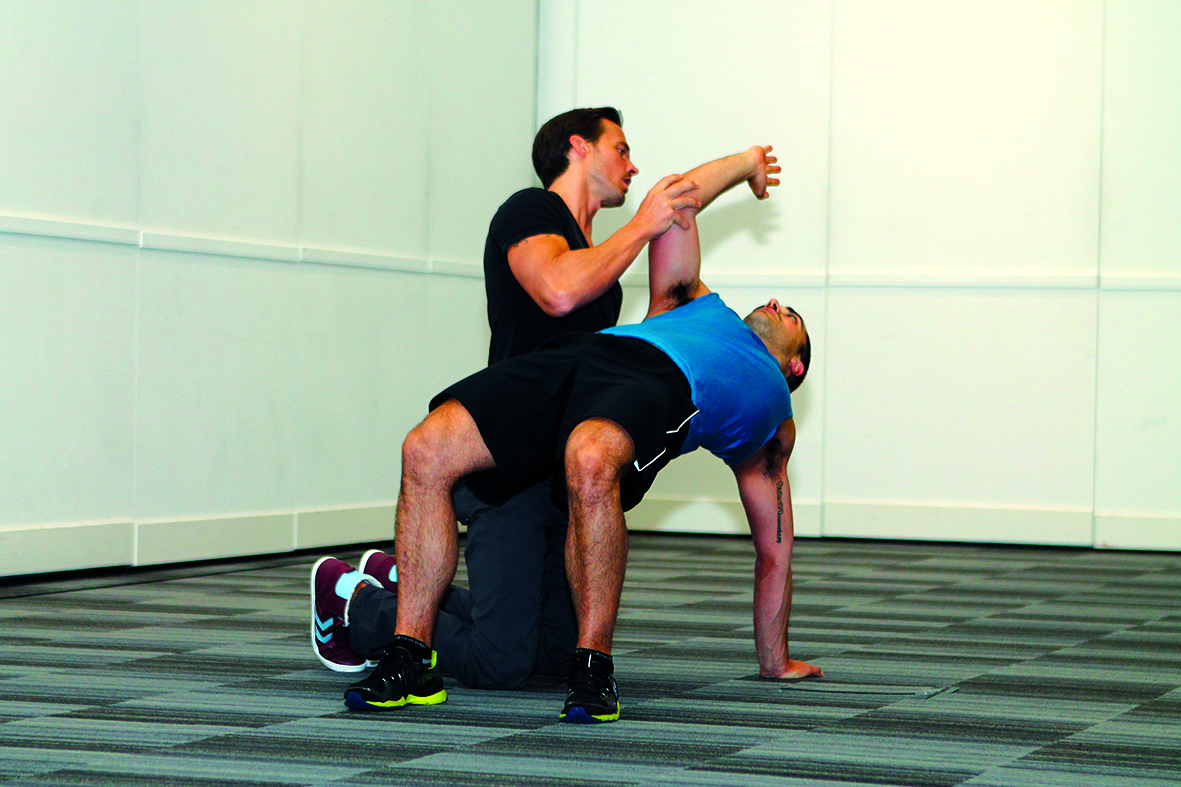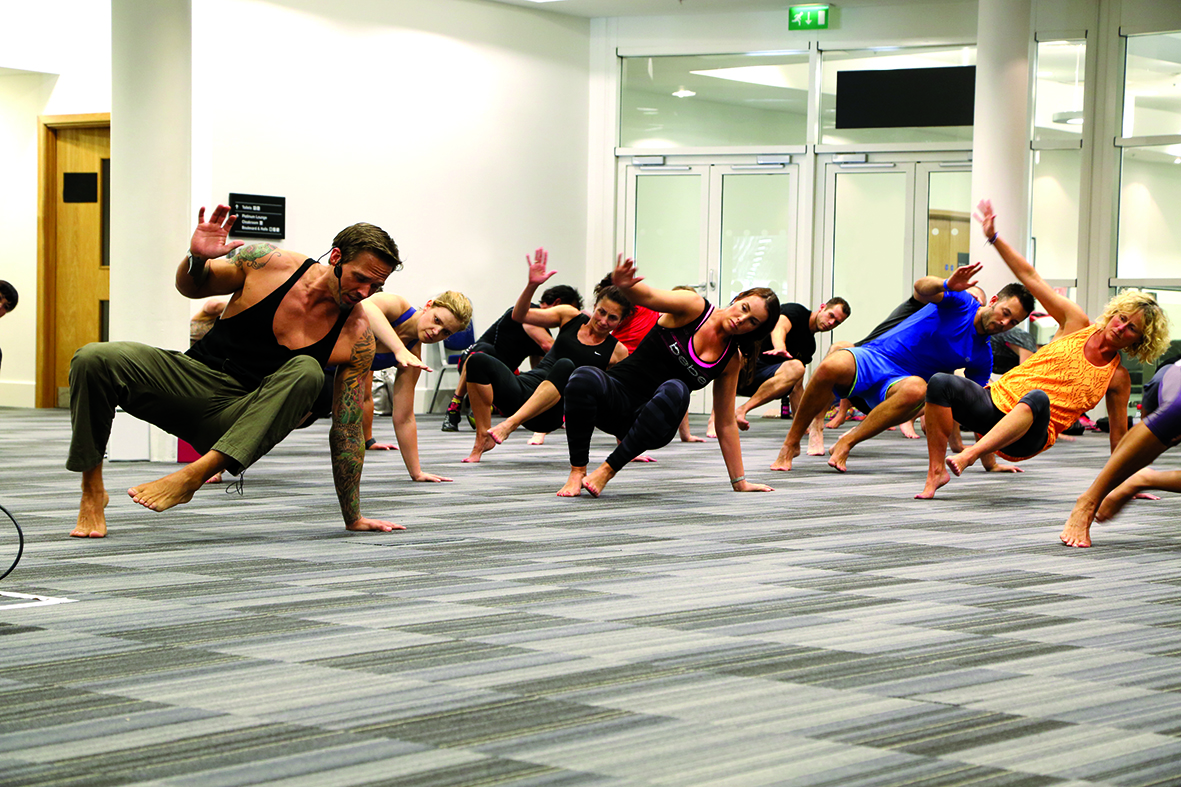Aping the primal movement patterns of the animal kingdom to build strength and flexibility is a new trend that is winning fans across the fitness spectrum, says Cheryl Hersey.
In an era where development in sports science and engineering creates more advanced training systems and equipment, conversely there is a growing trend for classes designed around the most fundamental movement patterns. ‘Movement training’ classes such as Animal Flow, Primal Move and The ZUU aim to enhance, restore and optimise the way the body functions, often requiring participants to re-learn certain movement patterns. Programmes draw inspiration from many traditional and long established training programmes, such as gymnastics, Capoeira, break-dancing, martial arts and contemporary dance. They help break down important movements so that people can start at a level appropriate to their capabilities and then progress steadily over time. “Classes bring together a range of natural movements, many of which we did effortlessly as children, such as crawling, squatting and rolling,” says Steve Collins from Freedom Leisure, which offers Primal Move classes. On the surface, a bodyweight class that involves re-learning fundamental movement patterns may seem like a regression when compared to the more research-based forms of training that are commonplace.
According to Richard Scrivener, an Animal Flow UK master instructor who teaches classes at TRAIN Fitness, movement training may actually be borne out of advances in sports science. “As knowledge advances, we understand the importance of restoring and optimising movement,” he explains. “As we push ourselves to accomplish more extreme types of sport and physical challenges, we realise we need robust and accommodating skeletons which are responsive and not inhibitory. The importance of movement quality has been well understood in the fields of sports conditioning, injury rehabilitation and postural correction for some time1,2,3, but movement training now makes it very easy to incorporate this type of training in regular gym workouts and group classes.”
As the demands of daily life require us to spend more time seated and less time on our feet engaged in physical tasks, it’s no surprise that postural and gait dysfunctions are commonplace. “Movement classes help people to ‘reconnect’ with their bodies, overcome faulty or compensatory movement patterns which can cause wear and tear, build robust joint health, increase soft tissue flexibility and teach people to control their body in 3D space,” explains Scrivener.
Broad-reaching appeal
The fact that movement training classes have a broad-reaching appeal has no doubt contributed to their emergence and subsequent popularity. “Absolutely anyone and everyone needs to move well; there are no exceptions,” says Scrivener. “Athletes, the elderly and those who sit in fixed postures at their desks can all benefit. Movement training can also help young children by challenging them to move in a way that is fun so that they can build strong foundations for their future physical development.” One of the clear benefits to operators is that classes can be performed anywhere, without any equipment. This provides a distinct cost saving over classes that require a significant equipment outlay. The equipment-free nature of movement training gives the operator greater flexibility, in that classes can be delivered in the studio or on the gym floor to fit around the existing timetable. Classes appeal to both sexes too, which isn’t necessarily the case with all group exercise sessions. “Animal Flow classes are typically split right down the middle – 50/50 with guys and girls,” says Scrivener. “There is something for everyone. Guys can enhance their control, flexibility and maintain strength with it, while girls can capitalise on generally good flexibility by advancing their joint stability, strength and power.”
A personal training tool

Animal Flow creator Mike Fitch takes a class at FitPro Live 2014
According to Scrivener, the application of movement training extends to PTs working with clients on a one-to-one or small group basis. “PTs can use movement training as an assessment tool when working with clients,” he explains. “The PT can identify areas of dysfunction that should be addressed during subsequent training. By incorporating Animal Flow, the trainer can offer challenging and fun workouts for all clients. Exercises are easy to progress and regress and can be delivered one to one or in groups, therefore offering an additional revenue stream.” Once a trainer has the knowledge, the principles of movement training can be applied in many contexts to suit the trainer. “A PT can incorporate movement training as a warm-up or cool-down, within a circuit, or alternated/supersetted with weight training,” explains Scrivener.
Three wildly popular movements
Animal Flow
This workout is based on movements that mimic or resemble different animals or that are inspired by the rhythm or nuance of an animal. These moves, or ‘forms’, include The Ape, The Beast and The Crab. Once the basic forms have been mastered, participants progress to travelling forms and switches, and finally to ‘flows’ where all of the elements are combined. Take a class at TRAINFITNESS.
Primal Move
Primal Move aims to retrain your body, reclaiming the natural ability we all had as babies and children to move with elegance, strength, power and speed. Classes take a play-orientated approach and encompass fundamental and functional movements, which mimic and support natural every-day moves like bending, twisting, stretching, turning, sitting down and standing up. Take a class at freedom-leisure.co.uk
The ZUU
Founded in Australia, The ZUU is based on high-intensity, primal movement patterns with strength and endurance bodyweight exercises – and it has been a huge success down under, with elite athletes, military forces and personal trainers among the growing band of practitioners already. Take a class at virginactive.co.uk
Animal Flow, Primal Move and The ZUU all offer their own instructor certifications consisting of one or more levels. Initial training is typically delivered over one day, after which an instructor can go on to Level 2 certifications.
Cheryl Hersey is a founding partner of Action PR. She is also the chair of the Fitness Writers’ Association, a networking organisation for fitness journalists. actionpr.co.uk
On your bike
For insight into a variety of group cycle classes across London, click here.







